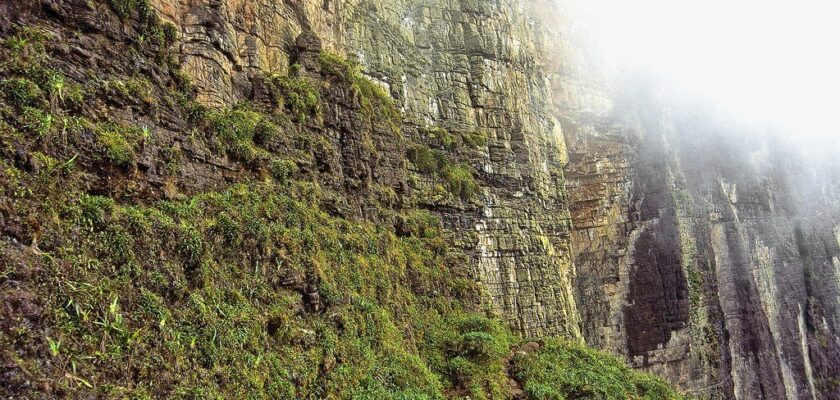Mount Roraima
This sightseeing attraction is related to the countries:VenezuelaBrazilGuyanaRoraima is a table mountain and one of the main attractions of the Latin American continent. “Roraima” translates to “big blue-green mountain”. The flat top of the tepui rises high above the clouds. Travelers who have conquered Roraima feel like they are on another planet: so unrealistic are the views from the top of the mountain. Being on Roraima can be compared to being on a deserted island. Only instead of the blue waters of the tepui sea, there is an ocean of milky white clouds.
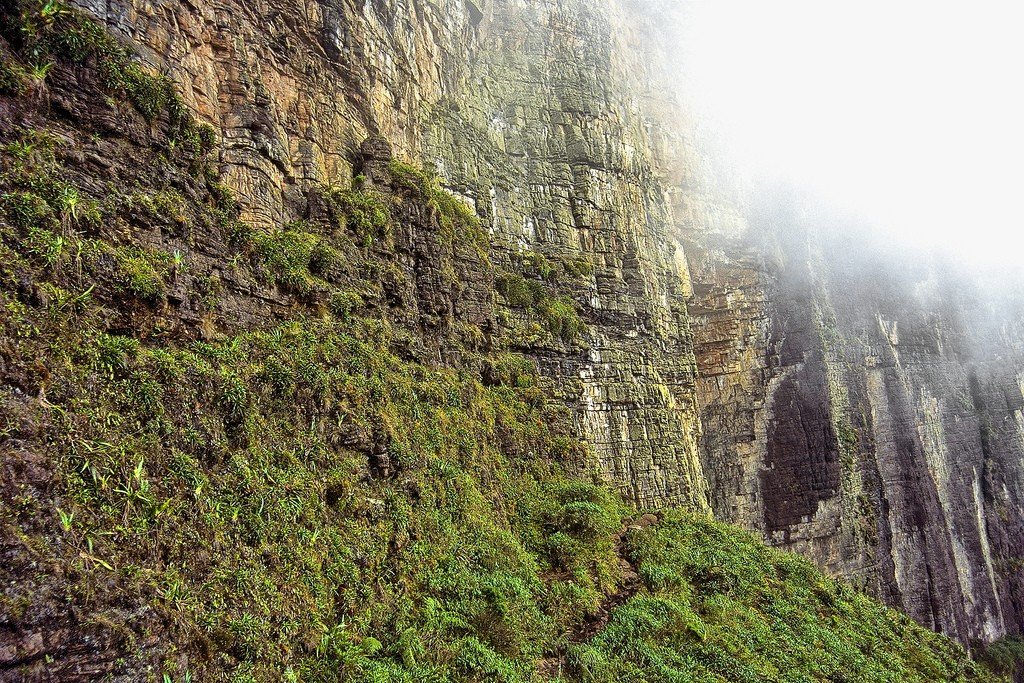
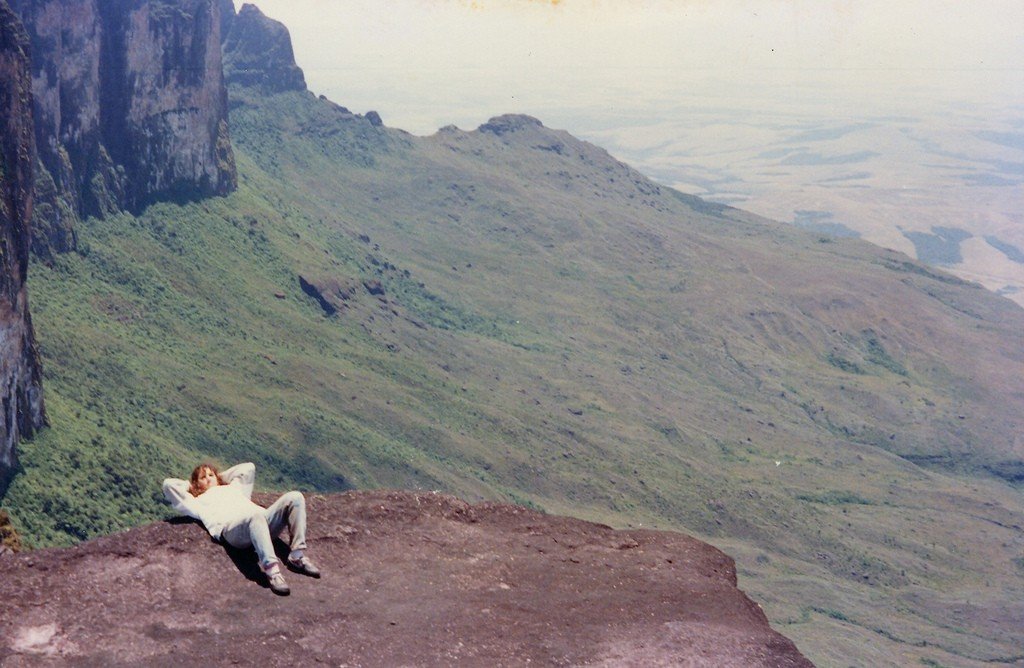
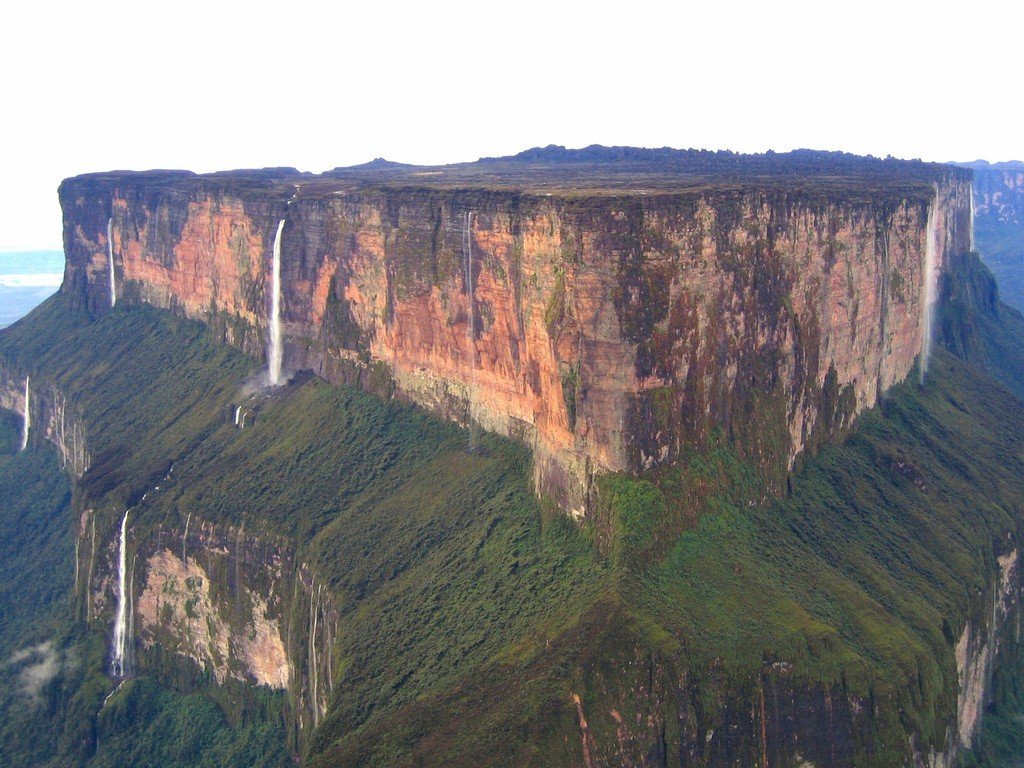
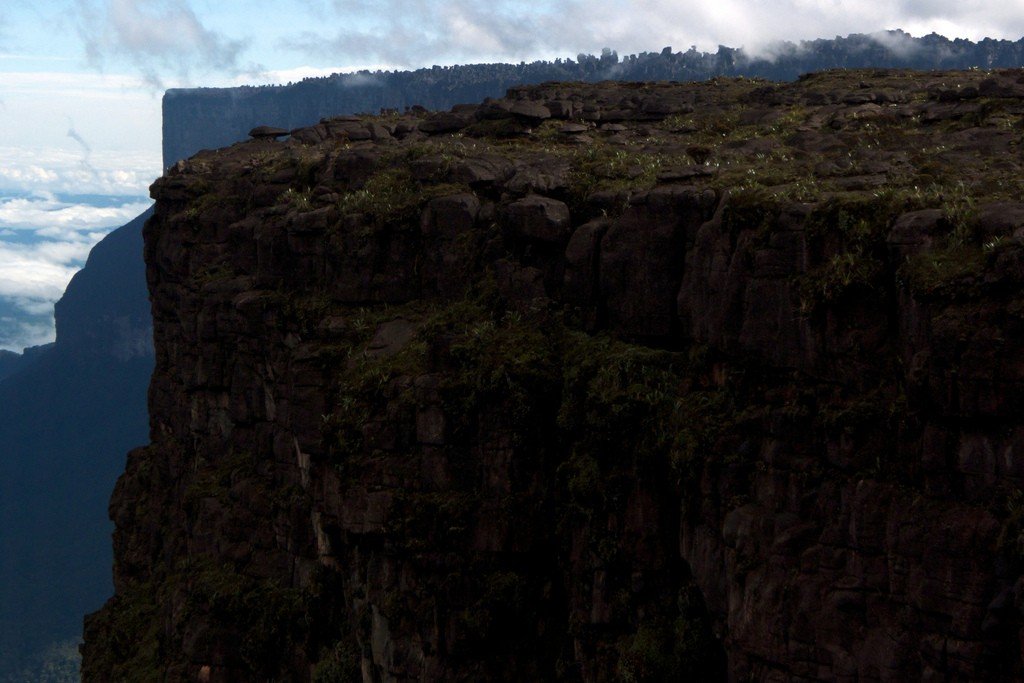
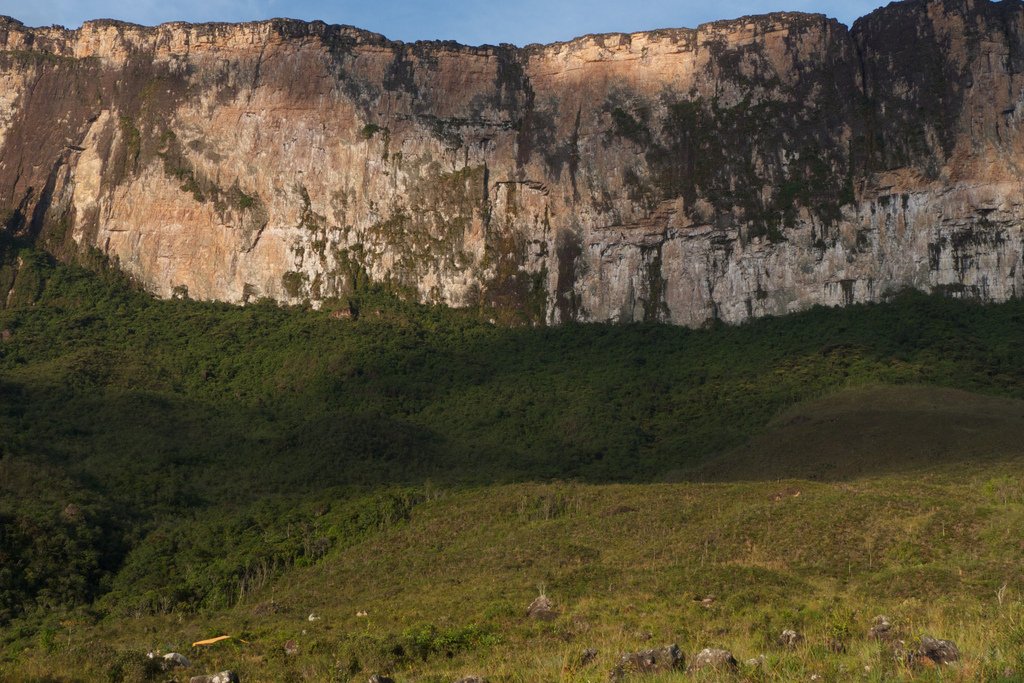
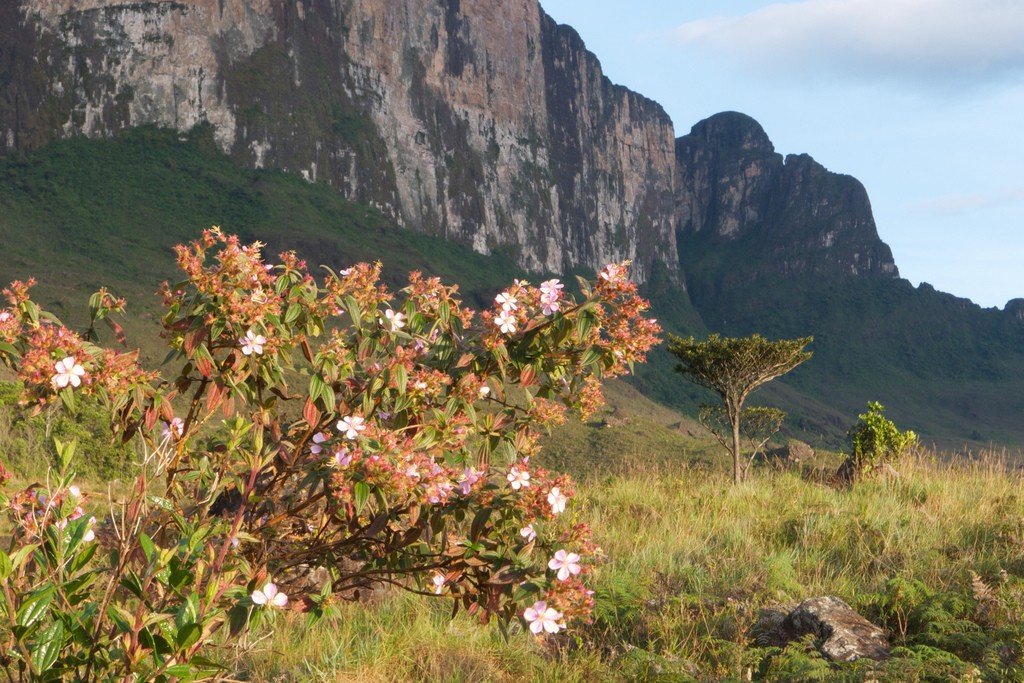
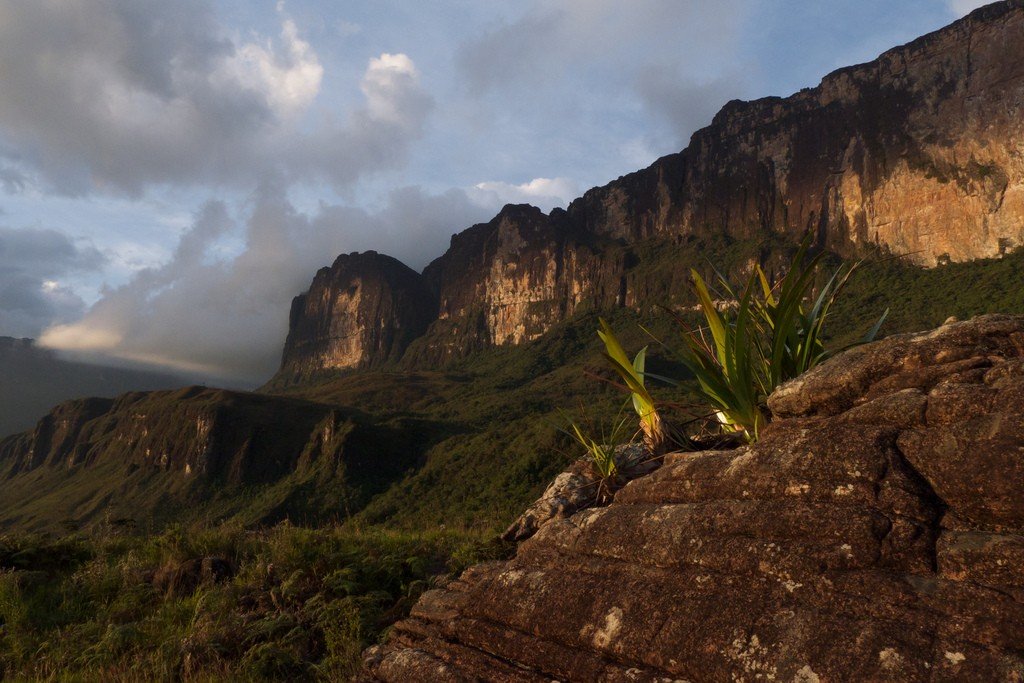
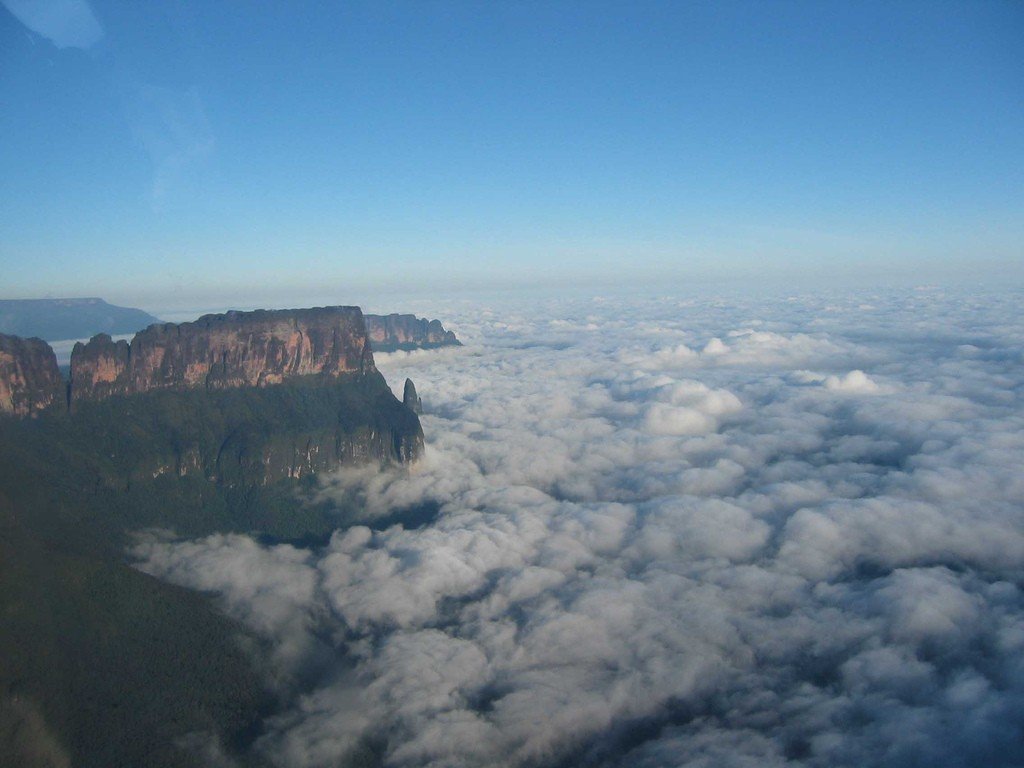
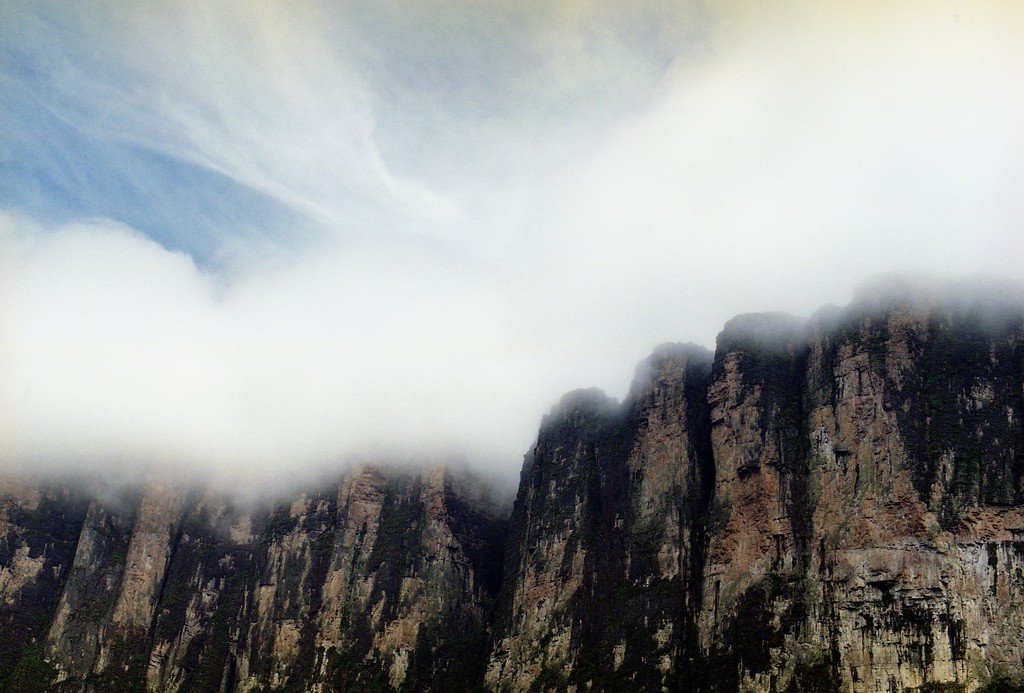
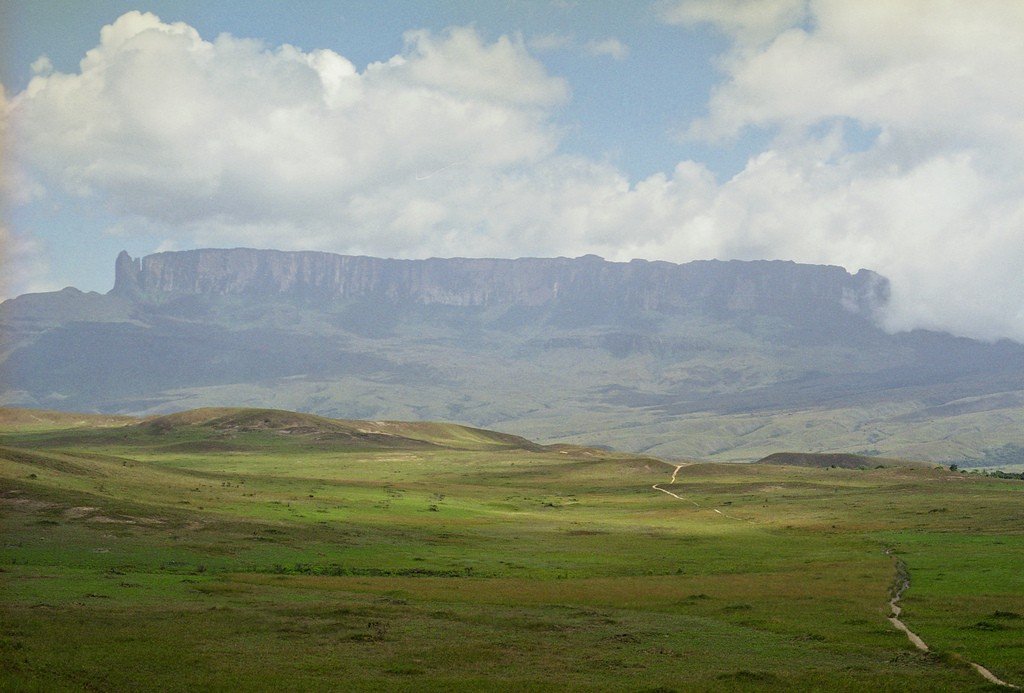
Video: Sunset on Mount Roraima
” title=”YouTube video player” frameborder=”0″ allow=”accelerometer; autoplay; clipboard-write; encrypted-media; gyroscope; picture-in-picture; web-share” allowfullscreen> Contents- Where Roraima is located
- Birth of a natural wonder
- Climate, flora and fauna
- Surrounded by legends
- Exploring Mount Roraima
- Roraima inspires
- How to climb
Where is Roraima located
The natural attraction is located on the territory of three countries at the same time. Most of it belongs to Venezuela. The other host countries of Roraima are Brazil and Guyana. Table Mountain is located at the southeastern point of Canaima National Park, which belongs to Venezuela..Birthplace of a natural wonder
Table mountains are mountains with flat tops and almost vertical walls. This type of mountain came from a sandstone plateau located between the Rio Negro, Amazon, Orinoco rivers and the Atlantic Ocean. Over a long period of time, the plateau was affected by erosion, which led to its destruction. As a result, mountains with peaks as flat as the surface of a table were formed. Roraima is called the highest tepui in Venezuela. The highest part of the mountain reaches an elevation of 2,810 meters.
.Climate, flora and fauna
In the lowlands of Roraima, the climate is almost the same as at the top of Table Mountain. Seasons of drought here alternate with seasons of rain. The higher one goes up the mountain, the colder and more humid the air becomes. In the morning hours the temperature does not exceed 0 ºC. The rainy season lasts from May to October. During this period, fog descends on the plateau and does not dissipate for weeks. Visiting Mount Roraima during the rainy season is not recommended.
.One-fifth of the surface of the table mountain is occupied by bodies of water: rivers, small lakes and peat bogs. The northern tip of Roraima is considered the most impressive spot, dubbed the “bow of the ship”. It is a sharp ledge.
.
Many of the animal and plant life on the summit of Mount Roraima are endemic. This means that living things are permanently confined to a limited area and follow their own evolutionary path. One of the brightest representatives of tepui endemics is considered to be Oreophrynella quelcha, a black toad of small size. The peculiarity of the amphibian is that, unlike its brethren, it can neither swim nor jump. If the Oreophrynella is threatened, it curls up in a ball and rolls into the space between the rocks..
Expeditions that have visited the plateau have managed to describe about 230 species of plants. The greatest diversity is represented by the families of compound flowers, millipedes and orchids. Many plants were forced to adapt to the local soil, which had lost much of its organic and mineral matter due to constant rainfall. Of particular interest are the insectivorous plants: dewberry of Roraima, Helimamphora drooping, vesicularia.
.Surrounded by legends
The word “tepui” (or “tepui”) is used by the Pemon Indians living in the vicinity of Roraima to refer not only to the table mountains. First of all, this is the name of the abode of the gods. One of the legends says that the goddess Queen once lived on the mountain. She became the foremother of all people on Earth by analogy with the biblical Eve. According to another legend, Mount Roraima was part of the trunk of a giant tree from which all the fruits of the planet originated. One day the tree was cut down by Makunaima, the hero of local tales. The remaining stump became known as Mount Roraima.
.Locals never go up to the “abode of the gods”. For them, this place is cursed. A man who dares to climb to the top will be severely punished and will pay with his life. Scientists believe that the legend is worth heeding. However, a trip to Roraima can end miserably not because of the curse: the top of the mountain often attracts lightning, which can kill a person.
.Modern scientists have not been able to solve all the mysteries of Roraima. During one of the expeditions on the plateau was found a circular platform on which there was no vegetation. Such a site could not have appeared naturally. Moreover, on a strange area of the plateau was found silver powder, which consisted of an alloy of rare metals. It was found that it is impossible to obtain such an alloy even with the use of the latest equipment. Among scientists there was a version that the mountain was repeatedly used by aliens as a spaceport.
.
A lot of unusual researchers found and in the mountain caves, the walls of which were painted with images of animals and creatures that resembled humans. Scientists found strange skeletons. The bones emanated a sweet-smelling odor. Inhaling the unfamiliar odor, some members of the expedition fell into a coma for a few days. When they came to their senses, they told their colleagues about their strange visions and travels in other worlds.
.
One of the expeditions lost their bearings on the plateau. The explorers wandered for months. At one point, according to the scientists’ own descriptions, they were picked up by a whirlwind and carried off the top of the mountain. Moments later, the expedition found itself in the center of an Indian settlement living near Roraima. The explorers were sure they had only been away for a couple months. As it turned out, the expedition dragged on for four years. According to scientists, being on Roraima for such an amount of time was impossible. The provisions were designed to last several weeks. The travelers would have starved to death. Time on tepui doesn’t flow the same way it does everywhere else.
.Exploration of Mount Roraima
The first descriptions of the mountain can be found in the works of Sir Walter Raleigh. The English explorer described Roraima in 1569. And the first Europeans to study the area around the mountain were Englishman Yves Cerne and German Robert Schombruck. The scientists published a report on their expedition in a German journal. Then came out a book in which Cern and Shombruk described in detail the unusual flora and fauna in the vicinity of the “abode of the gods”. Many fellow scientists did not believe them. The book written by Sern and Schombrook was categorized in the science fiction genre.
.
It was only possible to climb to the top of the mountain in 1884. The ascent was made by members of an expedition led by Edward Im Thurn. The flora and fauna of the tepui summit proved to be even more amazing than the flora and fauna at the foot. For hundreds of years the plateau had been isolated. No one climbed it, no one descended from it. Isolation from the outside world has allowed Roraima to preserve unique species of plants and animals that are now extinct or have been exterminated on the planet.
.
Thanks to an expedition in the 2000s, the largest currently known quartz cave system in the world was found on Roraima. To enter the cave, one must descend to a depth of 72 meters. The dungeon, which stretches for 11 km, is unique in that it has 18 exits.
.Roraima inspires
Mention of the legendary mountain can be found in both fiction and film. “Abode of the Gods” has inspired the work of many artists.
How the climb goes
Thousands of tourists visit the tepuis every year. The journey begins from Caracas, the capital of Venezuela. From here, adventurers head to the small town of Santa Elena de Huiren. From the capital you can get there by bus. In local travel agencies you need to buy a tour to visit Roraima.
.Climbing the mountain on your own is forbidden for two reasons. First, it is too dangerous. Secondly, the “abode of the gods” is located on the territory of the national reserve. Traveler who bought a tour, gets at his disposal guide-guide. It is usually a representative of the Pemon tribe, who knows well the mountain Roraima and its surroundings. It is possible to hire a whole team of guides. The Indians will carry the traveler’s belongings and prepare his food. Traveling with the use of guides-carriers will cost $250. If tourists prefer to cook their own food and carry their belongings, the excursion will cost no more than $150. It is also possible to climb Roraima by helicopter. However, this way to conquer the plateau because of the high cost is not chosen by many adventurers. In addition, the traveler will not be able to get to know the flora and fauna of the mountain well enough.
.
From the town of Santa Helena de Huiren, the expedition arrives in the village of Paratepui. Travelers are usually transported by jeep. The tour lasts from six to ten days. First, the guide leads his clients through the savannah to show the foothills of Roraima. On the third day, the climb begins. It is necessary to prepare for the trek in advance. To climb the mountain, a person must be in good physical shape. It is desirable to undergo a full medical examination before the trip. Take on the road need only the essentials: warm waterproof clothing, mosquito repellent and food stock, designed for 6-10 days.
.